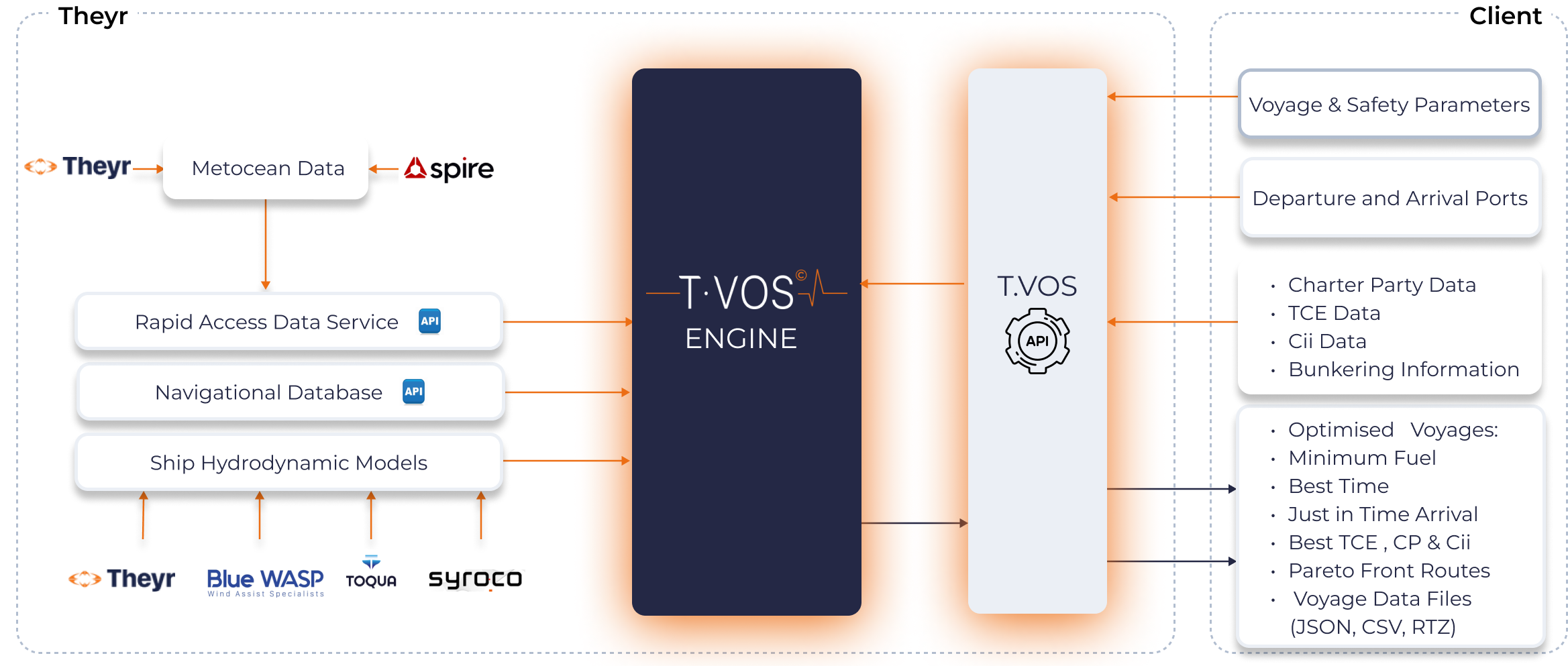In our previous blog posts, we have explored the evolution of voyage optimisation technology over time as well as the main values and advantages of what multi-objective optimisation may have for your business. Let’s delve into the most essential components of voyage optimisation and how the engine facilitates these.
What we call “Engine” in T.VOS comprises of the system that is built around the multi-objective genetic algorithm that creates the core of the solution. Figure A below depicts the information exchange between the engine, the API and the client-side also.

Due to the system-agnostic architecture of T.VOS, it can integrate with various data sources. The Rapid Access Data Server manages high-fidelity, large-scale, complex meteorological and oceanographic data sets and significantly reduces data transfer time. Furthermore, RADS provided multiple met-ocean parameters for historical or forecast route analysis in virtual real time.
Each computation is simultaneously optimising for minimum fuel, best time, just in time arrival, best TCE... etc. There is no limitation to the amount of data that T.VOS is capable of processing, which makes it a highly scalable solution tailored to each business.
The technology can be applied to a range of business solution including Full Suite Digital Service Providers and Fleet Performance Management Platforms
As should always be the case the quality of the input data is crucial to achieving the most precise results.
Weather conditions significantly impact the optimal route a vessel should take. By considering factors such as wind patterns, currents, and wave heights, voyage optimisation can identify routes that minimise fuel consumption, reduce voyage duration, and enhance overall efficiency and safety. High resolution weather data is a crucial part of the optimisation process. It enables vessels to navigate through changing weather conditions with safety and efficiency. Satellite informed maritime weather data is superior to other sources of weather data due to their comprehensive global coverage, providing real-time and accurate information over va6st oceanic areas that are otherwise difficult to access, enabling proactive decision-making and improved safety for maritime operations. Our partner Spire Weather provides highly accurate forecasts gathered from a constellation of 100+ satellites in space, further enriched by artificial intelligence. A unique aspect of the T.VOS voyage optimisation solution is that it is system agnostic and can integrate with the chosen provider of weather data.
Besides weather data, ship hydrodynamic models are also crucial to the voyage optimisation process. Each vessel has its own unique characteristics, including hull design, engine specifications, and cargo capacity. Ship models allow the multi-objective optimisation algorithm to account for individual differences maximising the efficiencies for each specific vessel. As illustrated in Figure A, T.VOS has the capability to integrate with a multitude of vessel models, and in addition to our own base models we also provide support for Blue Wasp Marine, Syroco and TOQUA vessel models.
The right voyage optimisation solution is multi-objective, scalable and system agnostic. Without an architecture that allows modularity and simultaneous optimisation it is not possible to adhere to changing regulatory frameworks while substantially increasing efficiencies.